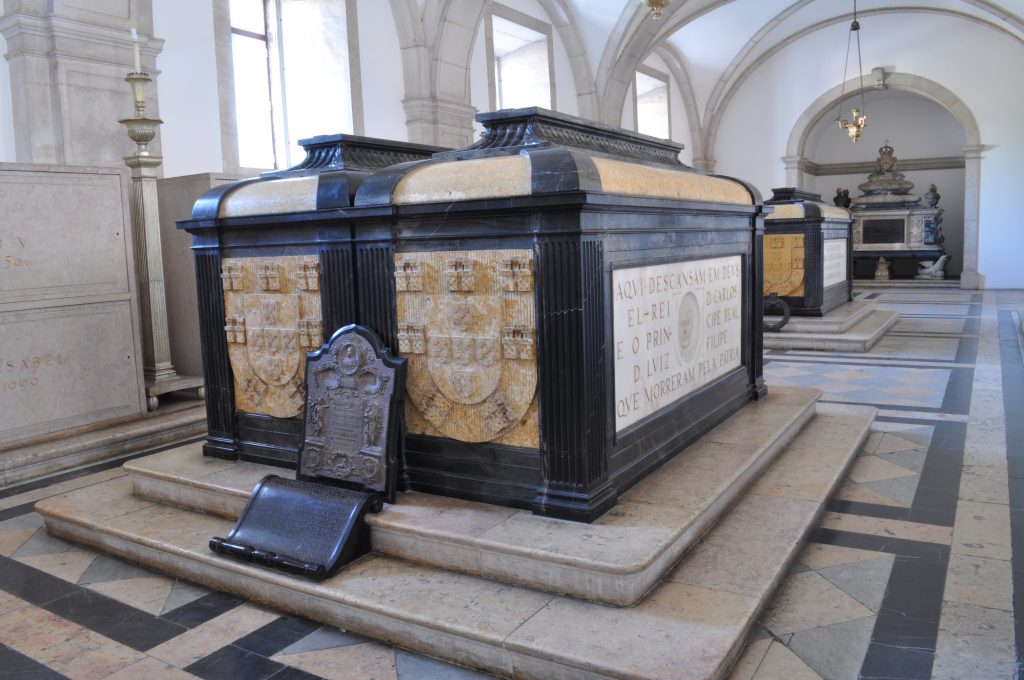Royal Pantheon of the Bragança
The Royal Pantheon of the Bragança is installed in the place where the refectory of the Monastery used to be, until the Dissolution of the Religious Orders (1834). Here, the canons regular ate their meals in silence, listening only to the sacred readings.
The founder of the fourth dynasty, King D. João IV (1604-1656), chose this monastery to house his family pantheon. This political act had the objective of reaffirming his legitimacy to the throne, thus seeking to associate himself with the first king of Portugal, who commissioned the primitive construction of this Monastery. The pantheon was initially located inside the church, and D. João IV’s tomb was situated in the main chapel below the tabernacle. Today, his marble tomb can be found at the entrance of the pantheon on the right.
D. Fernando II ordered the royal pantheon to be moved to the former refectory in 1854, after the death of his beloved wife, Queen D. Maria II. The pantheon’s current configuration is a result of a renovation plan carried out during “Estado Novo” in 1933, which was designed by the architect Raul Lino.
The tombs of the last Portuguese royal family are prominently displayed at the centre. The sculpture by the double tomb is entitled Dor (Pain) and it represents a female figure mourning the death of King D. Carlos I and his eldest son D. Luís Filipe, both murdered in the Regicide of 1908. This was the announcement of the end of the monarchy, which happened in 1910. The sculpture was designed by Francisco Franco.
Upon entering the pantheon, on the left, there is the image of Our Lady of the Immaculate Conception, who is both Patroness and Queen of Portugal, and also the Patroness of the House of Bragança.

